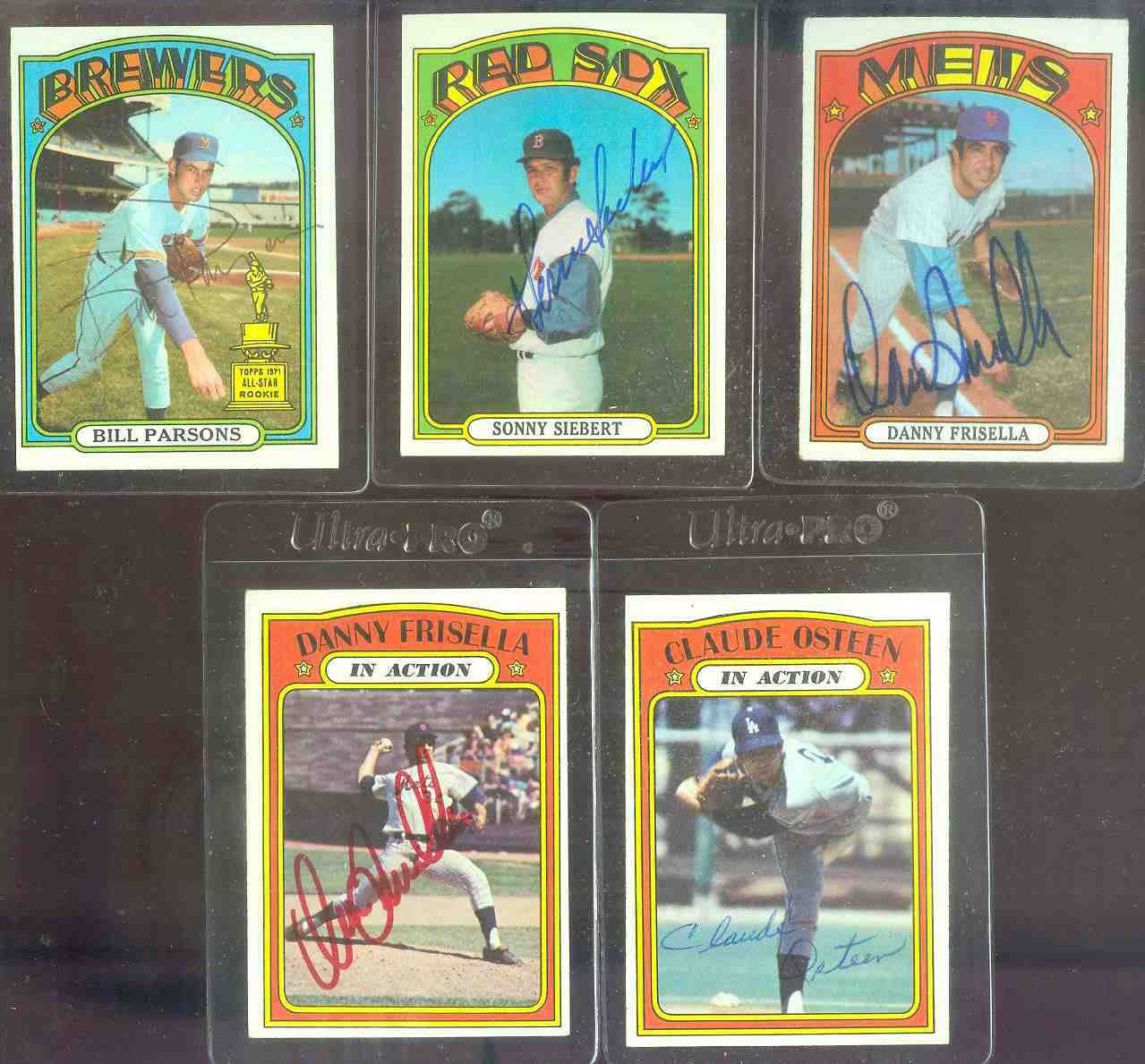Below are short bits & pieces on sportscard & baseball trading card collecting.
Please wander around the website for more info, prices, values & images
on vintage baseball, football, basketball, hockey, sport and non-sports cards.

1969 CITGO Coins
 In 1969, to commemorate Baseball's 100th Anniversary, CITGO released their
"Famous Baseball Player Coin Collection" of 20 brass coated metal coins.
On the front, the coins featured the player's name and a raised image of
his head. The back displayed a banner honoring baseball's s 100th Anniversary.
The coins are approx. 1" in diameter and are very susceptible to
tarnishing due to oxidation.
In 1969, to commemorate Baseball's 100th Anniversary, CITGO released their
"Famous Baseball Player Coin Collection" of 20 brass coated metal coins.
On the front, the coins featured the player's name and a raised image of
his head. The back displayed a banner honoring baseball's s 100th Anniversary.
The coins are approx. 1" in diameter and are very susceptible to
tarnishing due to oxidation.
Customers received a single coin in it's sealed pack free with a fill-up and
could pay 25 cents for additional coins.
The 20 coin set could be inserted into a cardboard backing for display.
On the back of the display was a short bio with stats of each player.
Click to view an image of the
cardboard backing and some more sample coins:
 Pictured is an unopened pack containing one coin.
Pictured is an unopened pack containing one coin.
Click for complete
1969 CITGO Coins Checklist and Prices
Note: You may be on that page right now.
|

1974 Topps & Parker Brothers Football
In 1974, along with cards in wax packs, Topps also issued the football
cards used in Parker Brothers' "Pro Draft" board game. The (50) Parker Brothers
cards are skip numbered from the 1st 132 Topps cards and are all
offensive players, mostly from the skill positions.
Most Parker Brothers cards are similar to the ones from packs except on the back
where most Parker Brothers cards had 1972 stats instead of 1973 and (2)* rather
than (1)* in the copyright line. BUT NOTE: Some regular Topps cards have
both * and ** --- It's complicated!
Six of the cards have totally different designs; three All-Pros and three with
horizontal designs that were changed to vertical to match the rest of the cards.
Team checklist cards were randomly included in the Topps wax packs.
TOP ROOKIES: Joe DeLamielleure, Ray Guy, Bert Jones, Harold Carmichael,
John Matuszak, Ahmad Rashad, Chuck Foreman, John Hannah and actor Ed Marinaro.
Click for complete
1974 Topps & Parker Brothers Football checklist and prices
Note: You may be on that page right now.
Click to visit a great blog on:
1974 Parker Brothers Football
|

1952 Topps Baseball Cards
Checklist & Values
1952 is often thought of as Topps 1st baseball card set, but it was not.
Topps issued several smaller baseball card sets prior to their huge 1952 set.
Topps buzz word was "BIGGER is BETTER" for their 1952 Topps set which
Topps described as: "GIANT IN BOTH SIZE and NUMBER of CARDS" (407).
Key card in the 1952 Topps set is #311 MICKEY MANTLE.
Often called Mickey Mantle's Rookie card - BUT IT IS NOT. That honor
goes to his 1951 Bowman.
1952 Topps "High Numbers" (#311-#407), are very, very scarce with an
interesting story:
This HUGE set was released in series weeks apart. By the last (6th)
series, baseball season was over and football starting.
Candy shops had plenty of baseball cards from earlier series
so most cancelled their orders for the last series creating the scarcity.
Adding interest is how Topps disposed of the now un-needed cards including
THOUSANDS of 1952 Topps MICKEY MANTLE's. They dumped them into the Atlantic
Ocean like most of New York's trash in those days.
|

Tobacco Cards
Starting approximately in 1886, sportscards, mostly baseball cards, were often
included with tobacco products, for promotional purposes and also because the
card reinforced the packaging and protected cigarettes from damage. These sports
cards are referred to as tobacco cards in the baseball card hobby. Over the next
few years many different companies produced baseball cards. Tobacco cards soon
started to disappear as the American Tobacco Company tried to develop a monopoly
by buying out other companies.
They were reintroduced in the 1900s, as American Tobacco came under pressure from
antitrust action and Turkish competition. The most famous and most expensive,
baseball card is the rare T206 Honus Wagner. The card exists in very limited
quantities compared to others of its type because Wagner forced the card to be
removed from printing. It is widely (and incorrectly) believed that Wagner did
so because he refused to promote tobacco, but the true explanation lies in a
dispute over compensation.
Soon other companies also began producing baseball and football cards. Sports magazines
such as The Sporting News were early entries to the market. Candy manufacturers
soon joined the fray and reflected a shift toward a younger target audience for cards.
Caramel companies were particularly active and baseball cards were one of the first
prizes to be included in Cracker Jacks. World War I soon suppressed baseball card
production.
© 1995-2019 "InterNet's Baseball Card Store" / Joseph Juhasz ... All Rights Reserved
|








